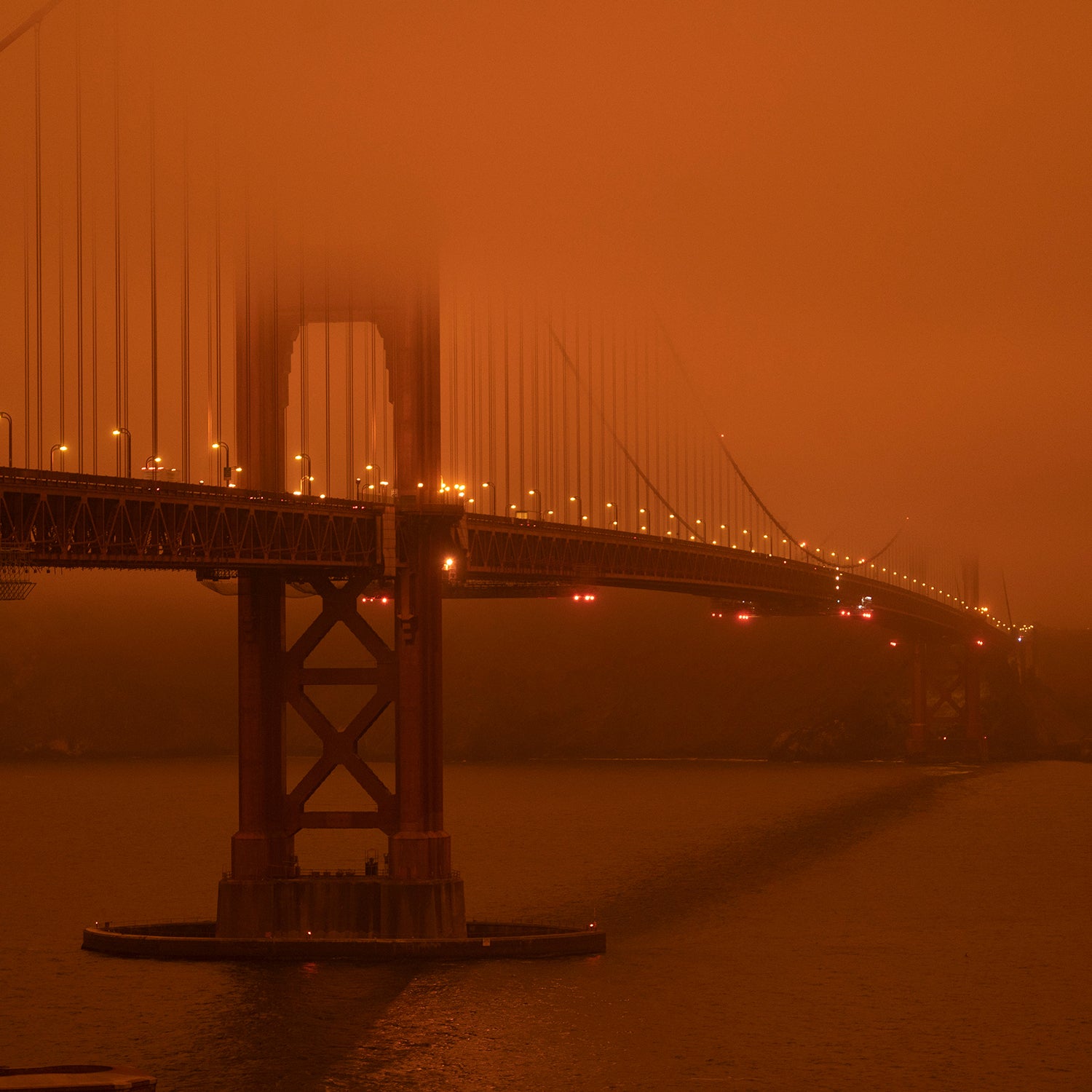I keep thinking it canÔÇÖt get any harder to breathe, and somehow it still does.
This week on the West Coast feels like something out of a dystopian novel. Old-growth forests and entire towns are burned over. Mill City, Oregon, is ash, as is Malden, Washington, and the fires are still growing and moving. The winds are high, and the relative humidity is low. This morning it took way too long for the sun to come up at my home in Seattle.
I have lived somewhere close to the edge of an area ravaged by wildfire╠řfor nearly╠řall of my adult life, and yet╠řthe╠řviolence and speed of such occurrences╠řstill shock me every summer. ItÔÇÖs easy to misremember last yearÔÇÖs blazes, or, like so many point-source environmental disasters, to avoid thinking about it until itÔÇÖs once again in your face. To ignore the threat until it ignites.
This╠řfeels like a too obvious reckoning, the exact way we were told , flipping into disaster so fast.
If you are not under that currently stretches the length of the West Coast, the photos probably seem surreal, and the high-speed destruction might be hard to fathom. Maybe if youÔÇÖre not directly impacted by the burns, it can seem like the late-summer╠řnews out of California is always about fire,╠řand that this year isnÔÇÖt much different. But it is.
The 2020╠řfire season is unprecedented, and itÔÇÖs just getting started. California has already broken its record for the total number of acres burned╠řin the state, and according to the╠ř, six of the twenty╠řlargest wildfires in the stateÔÇÖs history have occurred since January 1.╠řOregon governor Kate Brown recently said that this cycle of fire could cause the greatest loss of human life and property from wildfires ever seen in her state.
On Wednesday night, as the sky here in Seattle hung thick and gray-green with distant smoke, I sat balled up on the couch texting friends and family in Oregon, taking in the pictures they sent of╠řthe eerie orange sky, trying to keep track as the fire nearest them╠řchanged their evacuation plans from ÔÇťget readyÔÇŁ to ÔÇťgo now.ÔÇŁ
ÔÇťShould they all just come here?ÔÇŁ my boyfriend asked frantically at one point, looking around our tiny apartment as the evacuation zone engulfed his brotherÔÇÖs house in Clackamas County and headed toward his parentsÔÇÖ place.
Should they? What are our options when weÔÇÖre trying to pivot in the middle of panic? And even if they should comeÔÇöeven if they wanted toÔÇöitÔÇÖs unclear whether╠řthey actually could. Sections of many╠řmajor highways in the Northwest╠řhave╠řbeen closed by fire at some point in the past week. Evacuees are , and hotels are clogged and crammed despite the still present threat of COVID-19. This year has felt like a battle to make smartish decisions in the face of unclear, very bad consequences.╠řI am constantly wondering if the tightness in my chest is panic or rage or virus or smoke.
That red-dotted highway map of traffic jams╠řfeels like a climate metaphor, too, like weÔÇÖre in a narrowing funnel of choice and our pathways are closing down. Like every summer we have fewer options and the consequences keep getting worse.
If you love forests or rangy grasslands, if youÔÇÖre the kind of person who wants to be outside, you have to love fire, too, or at least understand that itÔÇÖs natural╠řand appreciate how it keeps a landscape healthy. But that doesnÔÇÖt mean this current level of destruction is normal or tenable or, most important, fully unavoidable.╠řThese past few years of rampant, ╠řare a clear example of how human choicesÔÇöand the way America is particularly bad at the╠ř environmental problems requireÔÇöhave╠řpushed the natural functions of our╠řlands into disaster.
All of these╠řfires╠řcome from a legacy of , failures of and a . ItÔÇÖs the rate in which╠řpeople are , thereby putting themselves in the line of risk╠řand having╠řto prevent╠řtheir property from╠řprogressing through natural fire cycles. ItÔÇÖs a negligence of indigenous . ItÔÇÖs also stupid human decisions, like and flaming cigarette butts and , which ignite flames.
But more broadly, itÔÇÖs the result of how fossil-fuel-driven climate change has led to fire conditions, and the way decades of passing the buck is now coming around.
╠řand our continuous use of fossil fuels, summer days in California╠řare more than a degree hotter than the historical average, Oregon is in the midst of its , and much of the rest of the West is and drought, too, drying out forests.
Like any kind of climate-related change, itÔÇÖs too late to stop the train of warming thatÔÇÖs already moving forward. Things will likely get worseÔÇöor at least stay just as badÔÇöand it will probably require╠ř. But it really depends on what we decide to do now about curbing fossil-fuel use to lessen╠řeven more warming.
Whatever we do, one thing is certain: our climate-change future is here.


